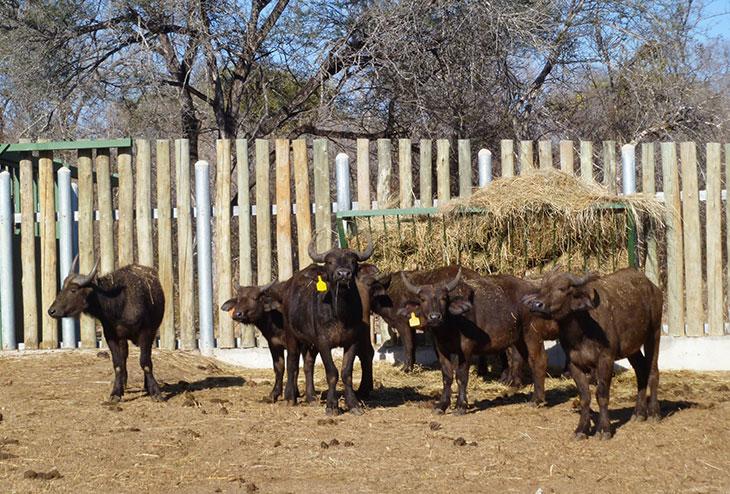A study by scientists at The Pirbright Institute – home to the UK, World and European Reference Laboratory for foot-and-mouth disease virus (FMDV) - has shown that the persistence of specific viruses is related to their virulence in cell culture.
African buffalo (Syncerus caffer) are the primary carrier host of FMDV in the African savannah, where the disease is endemic. These buffaloes therefore provide a unique opportunity to study the persistence of FMDV, as transmission from carrier ruminants has only been convincingly demonstrated for this species.
The disease circulates as multiple serotypes and strains in many endemic regions. In particular, the three Southern African Territories (SAT) serotypes are maintained effectively in the African buffalo, and individual animals may harbour multiple SAT-serotypes for long periods in the pharyngeal (head, neck or throat) region.
The study, published in The Journal of Virology, and led by Dr Bryan Charleston, Director of Science and Interim Director of The Pirbright Institute, involved tests using the three SAT-serotypes isolated from field buffaloes. These revealed that viral persistence in vivo was not homogenous and the SAT-1 isolate persisted for longer than SAT-2 and SAT-3.
Dr Charleston said: “FMDV is one of the most contagious animal diseases; affecting domestic livestock and wildlife species, and causing huge economic losses. In this study we found that FMD can persist for up to 400 days in buffaloes, with persistence occurring in the germinal centres of lymphoid tissue.
“There was competition between viruses during mixed infections, and cell cultures revealed similar competition - with virus that killed quickly persisting more efficiently in passaged cell cultures.
“Although the exact site and mechanism for persistence remains unclear, this study suggests that the duration of persistence is related to virus replication and cell killing capacity, and has shed new light on why particular viruses are more dominant than others in an ecosystem”.

Study shows persistence of FMDV is related to its virulence
A study by scientists at The Pirbright Institute – home to the UK, World and European Reference Laboratory for foot-and-mouth disease virus (FMDV) - has shown that the persistence of specific viruses is related to their virulence in cell culture. African buffalo (Syncerus caffer) are the primary carrier host of FMDV in the African savannah, where the disease is endemic. These buffaloes therefore provide a unique opportunity to study the persistence of FMDV, as transmission from carrier ruminants has only been convincingly demonstrated for this species. The disease circulates as multiple serotypes and strains in many endemic regions. In particular, the three Southern African Territories (SAT) serotypes are maintained effectively in the African buffalo, and individual animals may harbour multiple SAT-serotypes for long periods in the pharyngeal (head, neck or throat) region. The study, published in The Journal of Virology, and led by Dr Bryan Charleston, Director of Science and Interim Director of The Pirbright Institute, involved tests using the three SAT-serotypes isolated from field buffaloes. These revealed that viral persistence in vivo was not homogenous and the SAT-1 isolate persisted for longer than SAT-2 and SAT-3. Dr Charleston said: “FMDV is one of the most contagious animal diseases; affecting domestic livestock and wildlife species, and causing huge economic losses. In this study we found that FMD can persist for up to 400 days in buffaloes, with persistence occurring in the germinal centres of lymphoid tissue. “There was competition between viruses during mixed infections, and cell cultures revealed similar competition - with virus that killed quickly persisting more efficiently in passaged cell cultures. “Although the exact site and mechanism for persistence remains unclear, this study suggests that the duration of persistence is related to virus replication and cell killing capacity, and has shed new light on why particular viruses are more dominant than others in an ecosystem”.